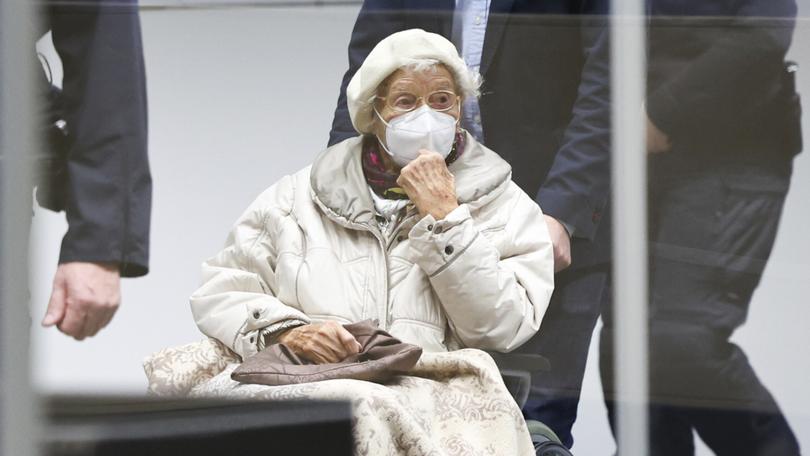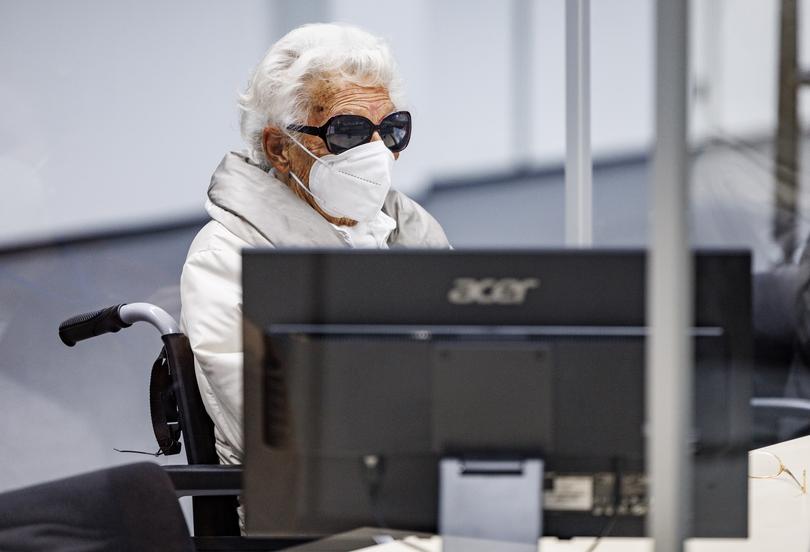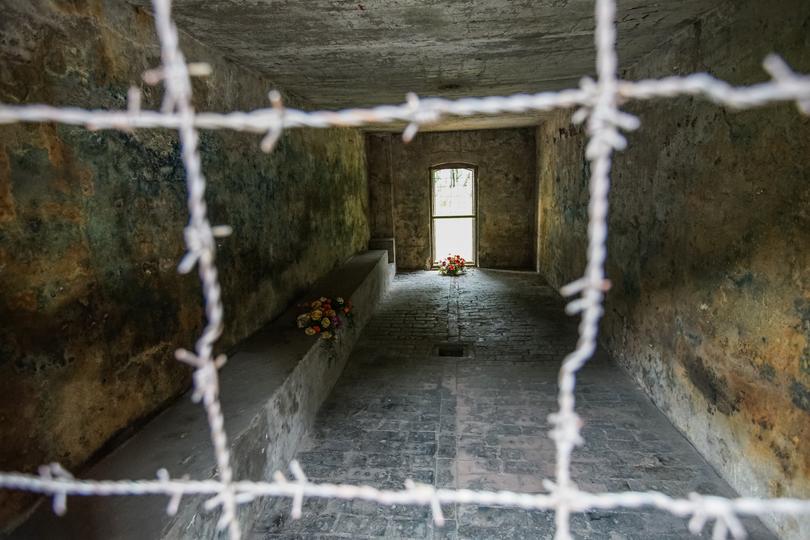Irmgard Furchner: Watching a 96-year-old who helped Nazis be trialled in a dock taught me why we need justice

As she was pushed into the court in a wheelchair, the elderly woman’s face was hidden behind a printed silk scarf.
Sunglasses and a medical mask further shielded her from Press photographers who had been briefly permitted to take pictures.
Irmgard Furchner was the first woman to stand trial on charges relating to Third Reich atrocities for decades.
Sign up to The Nightly's newsletters.
Get the first look at the digital newspaper, curated daily stories and breaking headlines delivered to your inbox.
By continuing you agree to our Terms and Privacy Policy.The trial began three years ago – bizarrely – in a juvenile court near Hamburg, Germany. She had been only 18 when she began working as secretary to the Kommandant of Stutthof camp.
I noticed an electronic tag on her arm. It had been attached after she fled her nursing home to avoid trial, an act that seemed to prove she understood the seriousness of her predicament.
Bear in mind, this woman was accused of complicity in the deaths of 11,400 people at Stutthof, on Poland’s Baltic coast, which became the first Nazi camp outside Germany when it opened two days after the war’s outbreak.
Despite her protestations of innocence, Furchner was convicted as an accessory to mass killings and given a two-year suspended sentence.
Now 99, her appeal against her conviction was rejected last week by Germany’s Federal Court.

When I first saw her in 2021, she looked sad and pathetic — just like the 100-year-old man I observed two days later in another German court, wearing a striped jumper and complaining of sleeping difficulties as he faced similar accusations.
The Lithuanian-born centenarian could not have looked less threatening. Yet this man, Josef Schutz, was found guilty of assisting in the slaughter of 3,518 people at Sachsenhausen concentration camp near Berlin.
Not that he saw the inside of a jail cell. Allowed to remain free while he appealed his five-year sentence, he died last year.
It felt strange to see on court TV screens the spookily-familiar black and white images of strutting Nazi guards in those grotesque camps – then to look across at first Furchner then Schutz, listening to claims they were crucial cogs in the Nazi machinery of mass murder.
Past horror entwined with present reality as Germany pursued some of the last surviving alleged perpetrators of these crimes against humanity.
This spate of cases followed the 2011 conviction of John Demjanjuk, a former guard at Sobibor camp.
Previously, German cases required proof of involvement in a murder. Yet after that case, anyone working at such a place could be tried as an accessory to the killings carried out there.
I was surprised by my reaction as I watched those frightened old people. I had been ambivalent about such trials beforehand, torn between the enormity of Nazi crimes and the age of these defendants and the comparatively minor role they played.
But my attitude hardened as I looked at that miserable old woman and even older man.
I became convinced that these trials were correct – even if they came decades too late and the accused were in the dock partly since they lived longer than their contemporaries.
Strangely, it was the sheer ordinariness of the defendants that strengthened my desire for justice. The banality of evil was on display as Schutz listened through his headphones (due to hearing difficulties) and Furchner fiddled with her sunglasses.
At one point, Heike Trautmann, a senior police officer, showed the court records of Schutz’s SS service after he answered the Fuhrer’s call to join the Nazi cause. Trautmann revealed that during Schutz’s 40 months as a guard at Sachsenhausen, there were 38,110 fatalities” “They were gassed, shot or died as a result of malnutrition and poor hygiene.”
She asked a court official to assist as she unrolled the list on which Sachsenhausen staff had detailed daily killings of Allied prisoners, political foes and “antisocials” such as Jews and Roma.
It was, incredibly, 14 meters long.
This was a stunning indication of the scale of these crimes and a reminder that even the most disturbing evil is carried out not by freaks and monsters but by ordinary people, driven by typical human traits such as ambition, fear or a misguided sense of duty.

The Nazi regime needed bureaucrats, guards and secretaries to function effectively and, as the historian Rachel Century told me, if enough people had refused to cooperate, millions of lives might have been spared.
About 64,000 of the 110,000 inmates held at Stutthof died, including some 28,000 Jews along with political prisoners, homosexuals and survivors of the Warsaw Uprising.
Many were executed but others died of disease, exhaustion and hunger.
Asia Shindelman was 15 – three years younger than Furchner – when taken to Stutthof in a cattle truck with her family.
She told me of seeing her grandmother being led off to be murdered, prisoners thrown on electric fences and men fed ‘like meat’ to dogs.
“It’s not possible for someone to say they did not know what was going on all around them,” said Shindelman, who was among the four per cent of Lithuanian Jews to survive the Holocaust.
“We did not look like people – we looked like skeletons.”
We can easily blame leaders for evil deeds – yet the potential for depravity lies beneath the surface of all human societies.
In my own lifetime, it has been seen repeatedly: from the slaughter of two million Cambodians under the despotic Pol Pot and the Rwandan genocide through to more recent events in the Middle East.
Or Look at the hideous rampage of murder, rape and torture carried out by Russian soldiers and their stooges in Ukraine. Is it any wonder Ukrainians get infuriated when outsiders casually blame Putin alone for the nightmare engulfing their nation?
I have met many victims of abuse and torture while reporting around the world and often wondered how anyone could perform such atrocities.
A few weeks before attending those court cases, I interviewed a Chinese police officer who told me how he helped beat and brutalise Uyghurs in the dictatorship’s clampdown on Muslim minorities.
He talked about whipping people until they became blind and using electric batons on their genitals. This man was a whistle-blower who fled China in disgust at his own role in these sordid events. He was remorseful.
Yet he showed how a warped sense of duty and a fear of punishment led an ordinary man to assist in torturing the innocent.
This is why those trials matter and why I changed my mind looking at those two old people.
They remind us how ordinary men and women aid and carry out the most terrible crimes. And for the sake of humanity, we must send an unstinting message to anyone participating in such atrocities that they will never be safe from justice.
